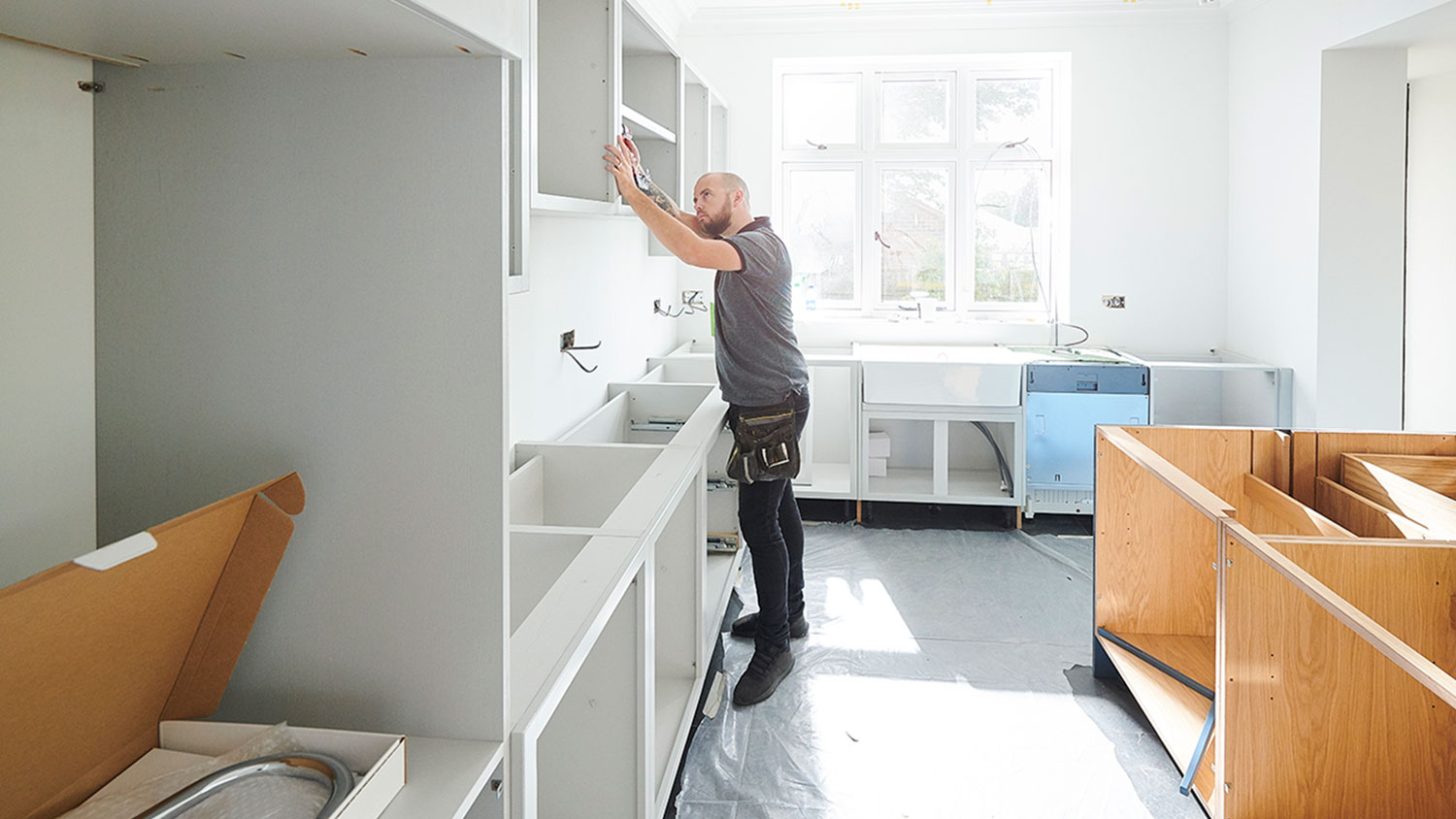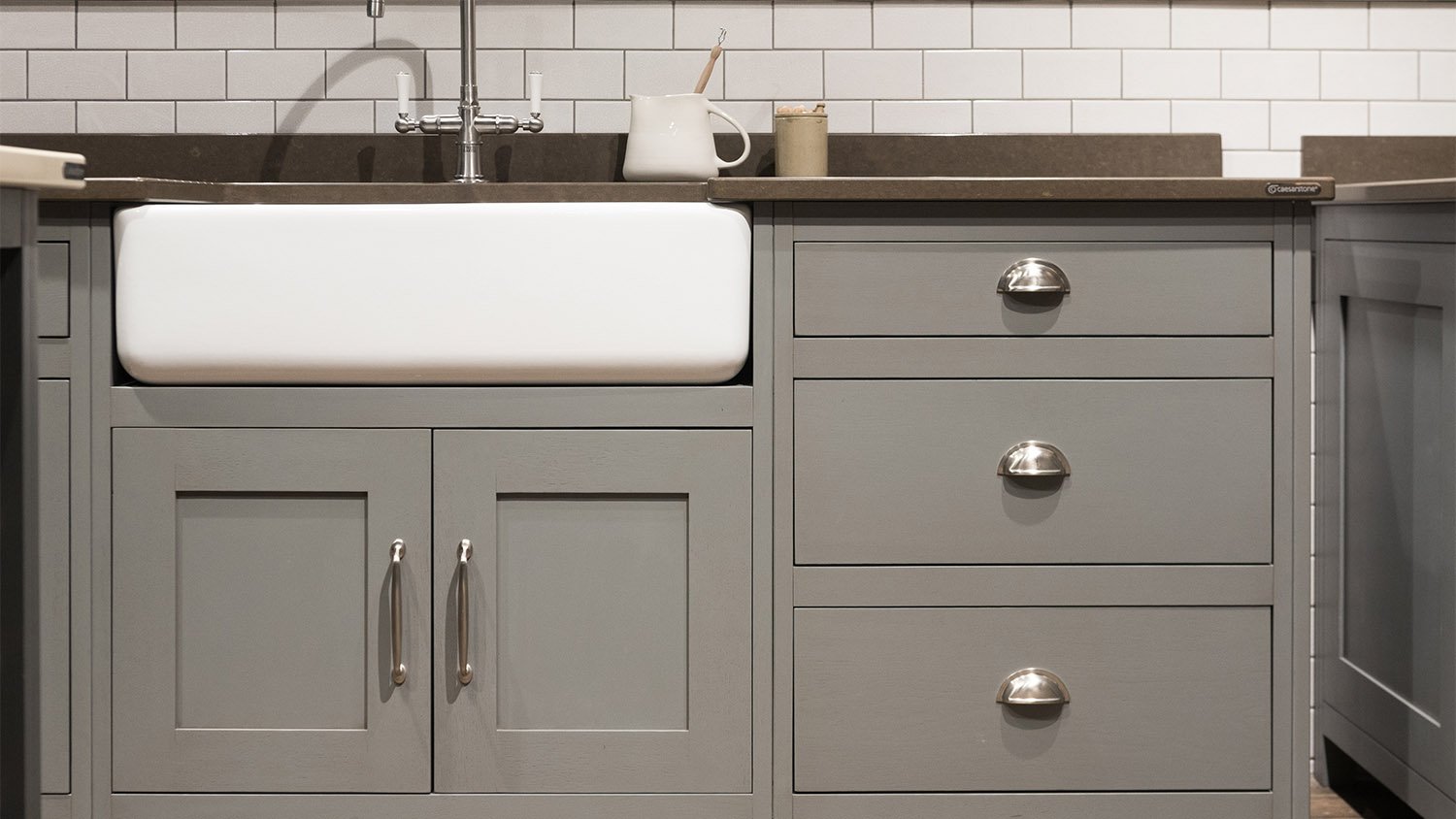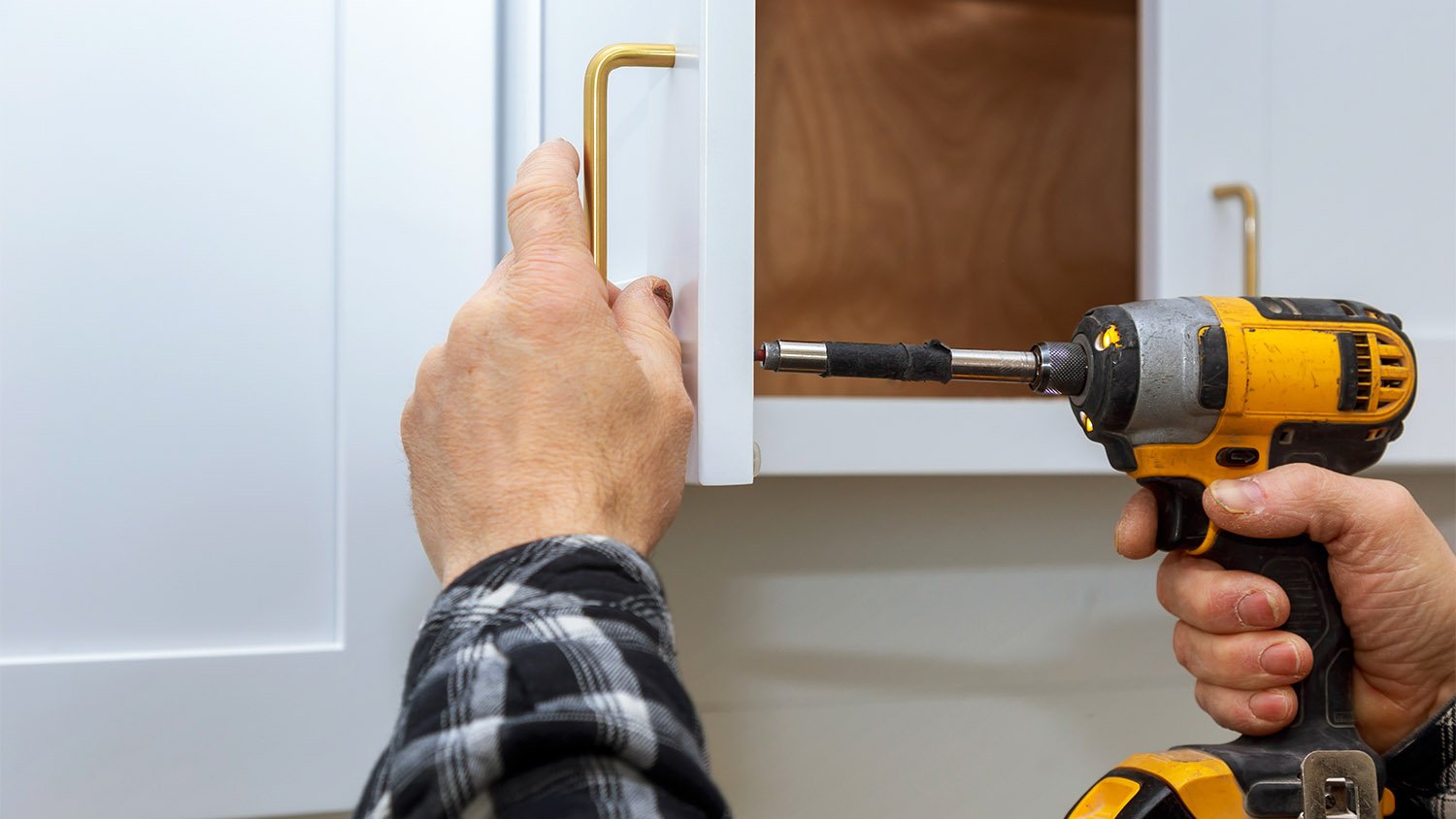
Discover cabinet installation cost estimates, including average prices, key cost factors, and tips to save on your new kitchen or bathroom cabinets.
You won't get pulled in the wrong direction with these kitchen handles, pulls, and knobs


The finish you choose plays a big role in the overall cost of new hardware.
Choosing a readily-available style makes it easier to find replacements later.
Metal knobs and pulls are less likely to harbor bacteria.
Kitchen cabinet hardware is not just about function—it can create a cohesive look across the whole room, tying in everything from the kitchen paint color to the sink basin. After spending months deliberating over your new cabinet style, colors, and materials, it's finally time to add those finishing touches. Before diving into the endless list of hardware options, here's what you need to know to choose the right cabinet hardware.
Let's start with the absolute basics. When you head to the hardware store, you’ll have your pick of kitchen cabinet hardware options.
Knobs are the smallest handles that affix to the corners of cabinets or the center of small drawers. They’re simple, sleek, and subtle but can be trickier to grab if you're rushing around the kitchen.
Pulls—sometimes called handles—attach to your drawers and cabinets in two places, allowing you to open them with your whole hand. Pulls come in several sizes and designs, including edge pulls that attach subtly to the inside of your cabinet. Bar pulls include a small vertical or horizontal bar, and cup pulls allow you to tuck your fingers underneath a curved hood.
Homeowners can either stick to knobs or pulls or mix the two in one kitchen design. Cabinets are more likely to host small knobs while heavier drawers feature pulls, but this depends on the look and shape of your kitchen.
If you know you'll need to flip open your cabinets in a hurry while cooking a meal, vertical pulls may be easier to grasp. Similarly, horizontal pulls are best for longer, heavier drawers to handle the load. However, there's no clear rule about which goes where. It all comes down to your preferred hardware shape and how the cabinet or drawer opens best.

In addition to the functional aspect of knobs and pulls, kitchen cabinet hardware will also play a major role in the style of your kitchen. Vintage cup pulls can give a farmhouse charm to cabinets, while hard-edged long pulls are best for an industrial look. You can keep things minimal by adding hidden edge pulls or choose to show off a bit of flash with decorative knobs.
So, does it matter if your kitchen hardware matches across the room? The pros and cons of matching cabinet hardware depend on your desired look. Combining a palette of different knobs and colors is your chance to create a more eclectic kitchen design. Choose a range of multi-colored knobs from the thrift store to stand out against simple cabinets.
You can achieve a happy medium between an eclectic and traditional look by simply mixing knobs and pulls but keeping them all the same finish. You can even match the finish of your sink faucet, lighting, and other metallic accents throughout the room.
The cost of your kitchen hardware comes down to several factors, but the finish will have a lot to do with your bottom line. You'll likely find common materials like wood, ceramic, plastic, and zinc for a few dollars apiece. However, if you get into finer materials like brass, copper, natural stone, glass crystal, or resin, you could pay more than $500 for knobs and pulls for a full kitchen.
And while costs can add up pretty quickly when it comes to all of the small pieces of hardware you need, remember that quality is key. You don’t want your hardware falling off as you prepare a large holiday dinner. Balance the finish quality with your desired budget.
Now that you’ve decided on your overall kitchen aesthetic and the right finish, how do you pair hardware color with the color of your cabinets? Keep in mind that color plays a fashionable and functional role.
Choosing contrasting colors—such as black pulls on white cabinets—will make them easier to see and create a stylish two-toned look. On the other hand, opting for glass or silver knobs on slate blue, country-style cabinets is more subtle.
Either way, kitchen hardware is a way to tie a whole room together, either with a neutral color or one that pops, so don't overlook this decision.

Not all kitchen pulls and knobs fit all cabinets. Pulls range between 3 and 5 inches on average, but you'll also find pulls that span the full length of a cabinet for a more modern look. For small cabinets—or cabinets with narrow edges—opt for knobs smaller than the average 1-1/4 inch diameter. Remember that the easier they are to grab, the less you'll grab for the edge of the cabinet instead.
Hardware placement also ties in with size. As we mentioned earlier, most cabinetry includes a knob or pull on the inside corner closest to where you're likely to grab it—the top corner for base cabinets and the bottom corner for wall cabinets. Pulls on drawers sit at the center of the drawer front or along the top.

High-traffic areas like the kitchen and bathroom are easier to clean when working with antimicrobial materials. Metals like stainless steel, copper, titanium, and silver are less likely to host some viruses and bacteria. While you'll still need to clean these surfaces as you would any others, you’ll worry a bit less when prepping food and grabbing for the kitchen cabinets.
As you fall down the rabbit hole of shape, color, finish, and vintage versus modern, remember that kitchen hardware will likely need replacing at some point. Between design changes and general wear and tear, you may need to go hunting for that brass knob in the next 10 years. Make your life a bit easier by choosing a common enough style that is easy to replace if necessary. If you opt for the mismatched funky look, create a design that works with another fun find when the time comes.

DIY kitchen hardware installation is a doable project you can finish in a weekend. If you choose to hire a pro, a local kitchen cabinet installer or handyperson can do the job for between $130 and $275. If you're torn about the endless hardware options on the market, don't be afraid to call in a local interior designer for a second opinion.
From average costs to expert advice, get all the answers you need to get your job done.

Discover cabinet installation cost estimates, including average prices, key cost factors, and tips to save on your new kitchen or bathroom cabinets.

Choosing new cabinet hardware is a fun balance of practicality and design. Costs range between under $100 and up to five figures, though, so budgeting and knowing which materials you can afford is key. This cost guide breaks it all down.

When refinishing your cabinets, you’ll need to consider the condition of your cabinets, budget, color, and stain preference. Find the cost to refinish cabinets in this guide.

Thinking about adding toppers to your kitchen cabinets for additional storage space? Check out our guide with multiple ways to make it happen.

Hanging a cabinet without a stud is possible, but you’ll be limited in its weight capacity. Learn how to hang a cabinet without a stud.

When upgrading your kitchen, compare inset vs. overlay cabinets. Here’s what you should know about the differences between the two constructions.